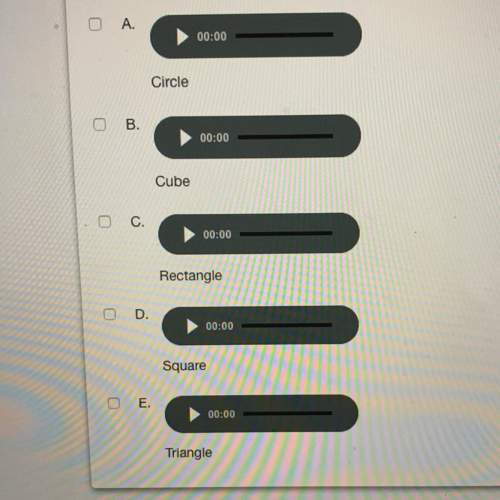
Mathematics, 05.12.2019 19:31 andrecoral105
Frame score in beef cattle is based on height at the hips and is used as a measure of skeletal size. frame scores range from 1 to 10 with a higher number indicating a taller animal. independent random samples of frame scores were selected from the angus and simmental breeds of beef cattle with the following results:
angus simmental
5 7
6 7
7 8
5 6
7 7
6
we use analysis of variance to test the null hypothesis that the breed means for frame score are equal (use α = 0.05).
which one of the following is not an assumption that must be met in order for the analysis of variance procedures used in this problem to be valid?
group of answer choices
a) the frame scores of both populations (angus and simmental) must have a normal distribution.
b) the variances of the frame scores in both samples must be equal.
c) the samples from the two populations (angus and simmental) must be random and independent.

Answers: 2


Another question on Mathematics

Mathematics, 21.06.2019 19:00
The following division is being performed using multiplication by the reciprocal find the missing numbers is 5/12 divided by x/3 equals 5/12 times x/10 equals 1/x
Answers: 2

Mathematics, 21.06.2019 19:30
Weekly wages at a certain factory are normally distributed with a mean of $400 and a standard deviation of $50. find the probability that a worker selected at random makes between $450 and $500
Answers: 2

Mathematics, 21.06.2019 21:40
Write the contrapositive of the conditional statement. determine whether the contrapositive is true or false. if it is false, find a counterexample. a converse statement is formed by exchanging the hypothesis and conclusion of the conditional. a) a non-converse statement is not formed by exchanging the hypothesis and conclusion of the conditional. true b) a statement not formed by exchanging the hypothesis and conclusion of the conditional is a converse statement. false; an inverse statement is not formed by exchanging the hypothesis and conclusion of the conditional. c) a non-converse statement is formed by exchanging the hypothesis and conclusion of the conditional. false; an inverse statement is formed by negating both the hypothesis and conclusion of the conditional. d) a statement not formed by exchanging the hypothesis and conclusion of the conditional is not a converse statement. true
Answers: 1

Mathematics, 22.06.2019 04:20
If there are 825 students at cherry hill high school and 4 out of every 5 students voted in the student council election, how many students voted?
Answers: 2
You know the right answer?
Frame score in beef cattle is based on height at the hips and is used as a measure of skeletal size....
Questions

Mathematics, 12.11.2020 06:20


Advanced Placement (AP), 12.11.2020 06:20


History, 12.11.2020 06:20



Computers and Technology, 12.11.2020 06:20

History, 12.11.2020 06:20

Mathematics, 12.11.2020 06:20

Mathematics, 12.11.2020 06:20

Mathematics, 12.11.2020 06:20

History, 12.11.2020 06:20


Health, 12.11.2020 06:20


Arts, 12.11.2020 06:20



Mathematics, 12.11.2020 06:20




